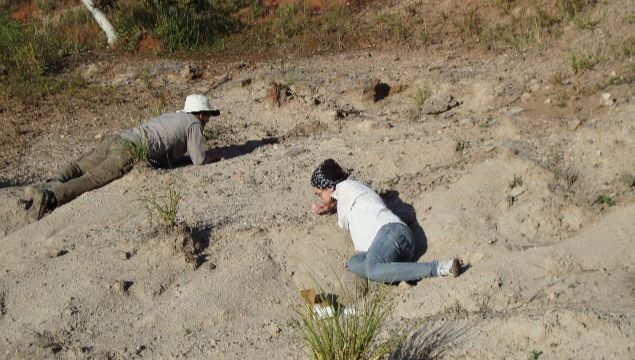Latest Photo Galleries
Brazilian Markets
17h01 Bovespa |
+1,08% | 128.496 |
16h43 Gold |
0,00% | 117 |
17h00 Dollar |
-0,83% | 5,0697 |
16h30 Euro |
+0,49% | 2,65250 |
ADVERTISING
Prehistoric Fossils Found in Squatting Area in Southern Brazil
05/17/2018 - 13h39
Advertising
AMANDA AUDI
FROM CURITIBA
The fossils of animals that lived between 42 million and 39 million years ago were found in 16-hectare site in the Brazilian city of Curitiba, in a place surrounded by squatting areas and at the back of an old hospital waste landfill.
Up until the site was listed by the City Hall in late March, squatters had tried to occupy the area several times.
It is the first time that animals of that geologic period are found in Brazilian territory. These extinct species are similar to today's armadillos, sloths, anteaters, crocodiles, marsupials and hoofed animals (related to horses).
Others seem out of science fiction movies, such as the so-called "horror birds." These are carnivorous birds with long, sharp beaks that could not fly and whose height reached up to two meters. They became extinct several million years ago.
| Folhapress | ||
 |
||
| As the work is still ongoing, the researchers believe that other surprises are yet to be found |
Three species, called sparassodonta, which hold no resemblance with today's animals, were also found. These were meat eating predators with cutting molars and long cuspid teeth. Some were as big as a jaguar.
As the work is still ongoing, the researchers believe that other surprises are yet to be found.
In addition to the specialists of the Federal University of Paraná, (UFPR) who are leading the study, researchers from the states of São Paulo, Rio Grande do Sul and Pernambuco also comprise the team.
In the period when these species lived, the South American continent was not attached to the other continents (including North America), giving the local fauna singular features.
Translated by THOMAS MUELLO



